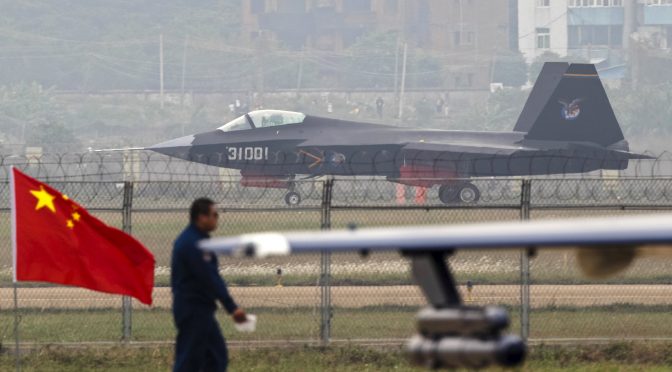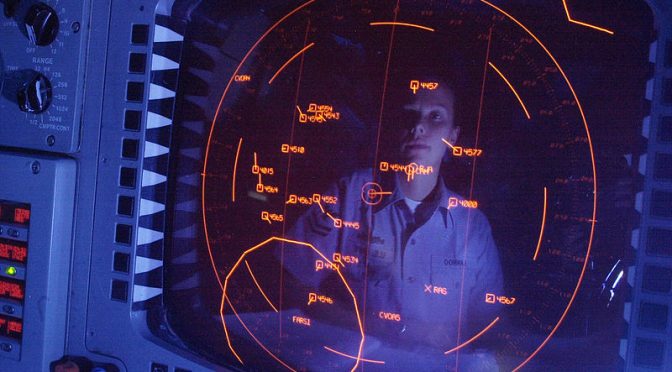Dr. Ching Chang
The Coming Power Reshuffle
The Nineteenth National Congress of the Chinese Communist Party will be held on October 18, 2017. As many China political observers already know, the Communist Party National Congress itself and the First Plenary Session of the Nineteenth National Congress of the Communist Party of China that gathers immediately after the National Congress will be the defining event for the reallocation of power for the next five years.
This National Congress will select new membership for the Central Committee, the Central Commission for Discipline Inspection, and the subsequent First Session of the Central Committee will select Politburo, Politburo Standing Committee, and party Secretariat members. It will also decide on the members of the Military Commission of the Central Committee, in addition to leadership selection such as the General Secretary. Additionally, many states that are tightly associated or affected by future Chinese political maneuvers are concerned about whether any new policy will also be formulated through the same mechanisms.
This article will provide certain credible references as the basis to judge the possibility of revising existing policies by scrutinizing the institutions of these two meetings and reviewing actual practices of previous similar meetings. Whether these two meetings can become platforms for substantial policy discussion, debate, and reconciliation is the core matter that needs to be understood in order to identify any PRC policy revision and grasp a more overt picture of how the Chinese Communist Party manages their political and power transitions. Yet this still might not be necessarily implying any immediate policy shifts and adjustments.
Examining the Nature from the Institutions
It is necessary to review the Chinese Communist Party Constitution to understand the nature of the National Congress of the Chinese Communist Party. According to Article 19 of the Constitution:
“The functions and powers of the National Congress of the Party are as follows: 1. To hear and examine the reports of the Central Committee; 2. To hear and examine the reports of the Central Commission for Discipline Inspection; 3. To discuss and decide on major questions concerning the Party; 4. To revise the Constitution of the Party; 5. To elect the Central Committee; and 6. To elect the Central Commission for Discipline Inspection.”
As we review the meeting records of previous Chinese Communist Party National Congresses, we may notice that all six functions and powers have been well exercised except the third one which is, “To discuss and decide on major questions concerning the Party.” This is actually the only function that contains the possibility of formulating or revising policies, yet it is rarely utilized in previous congressional agendas. The first and the second functions are fundamentally a top-down model of political communication and the examination process is in essence a formality conducted by applauding. The fourth function is focused on internal institutions by setting operational rules within the party and hardly associated with any policy toward the outside world. And finally, the fifth and the sixth functions are basically serving the purpose of internal power reallocation. We therefore hardly find any trace of substantial policy formulation.
Nonetheless, the first function of the Party General Secretary is to identify certain elaborations and interpretations of policies. For instance, Hu Jintao, in his capacity as the General Secretary of the Central Committee of the Communist Party of China, delivered his report to the Eighteenth National Congress of the Communist Party of China titled, “Firmly March on the Path of Socialism with Chinese Characteristics and Strive to Complete the Building of a Moderately Prosperous Society in all Respects” (堅定不移沿著中國特色社會主義道路前進,為全面建成小康社會而奮鬥) on Nov 8, 2012, is a typical case of identifying the contents of PRC’s policies.
The major portion of this policy report may address domestic issues. Nevertheless, contents mainly within several chapters of this report such as the Chapter IX, “Accelerating the Modernization of National Defense and the Armed Forces” (加快推進國防和軍隊現代化), Chapter X, “Enriching the Practice of ‘One Country, Two Systems’ and Advancing China’s Reunification” (豐富”一國兩制”實踐和推進祖國統一) and Chapter XI, “Continuing to Promote the Noble Cause of Peace and Development of Mankind” (繼續促進人類和平與發展的崇高事業) may naturally trigger concerns from international audiences.
There are several features we should address here to remind the readers that these statements within the report are not the result of policy formulation process contained by the meeting agenda. First, the contents of the report are concluded from the actual practices during the period of the previous Central Committee still in power. The perspectives are more or less retrospective and relatively less prospective in nature. Second, it is a report delivered by the party General Secretary of the past five-year term Central Committee. Unless the same General Secretary of the party extends for another term for five years, power may pass to new leadership right after the party National Congress. Although there certain elements of policy continuity may exist, the contents revealed by the report are no assurance for their applicability in the future.
And last, it is a unilateral political communication, not a multilateral discussion at all. It therefore could not be a result of a policy review occurred within the National Congress itself. We may expect Xi Jinping will follow the same modus operandi to conclude all his achievements in his previous five-year term and mention still valid policies for his next term. The possibility of declaring new policy is relatively low since no proper policy review is likely to happen in this enormous political gathering. There also is no meeting agenda to accommodate any provisional policy proposal.
As for the First Plenary Session of the Nineteenth National Congress expected to be held right after the National Congress, its main mission at this period is to select new leadership for the party, not revise or promulgate new policies. According to Article 22 of the present Constitution of the Chinese Communist Party:
“The Political Bureau, the Standing Committee of the Political Bureau and the General Secretary of the Central Committee of the Party are elected by the Central Committee in plenary session. The General Secretary of the Central Committee must be a member of the Standing Committee of the Political Bureau. When the Central Committee is not in session, the Political Bureau and its Standing Committee exercise the functions and powers of the Central Committee. The Secretariat of the Central Committee is the working body of the Political Bureau of the Central Committee and its Standing Committee.
The members of the Secretariat are nominated by the Standing Committee of the Political Bureau of the Central Committee and are subject to endorsement by the Central Committee in plenary session. The General Secretary of the Central Committee is responsible for convening the meetings of the Political Bureau and its Standing Committee and presides over the work of the Secretariat. The members of the Military Commission of the Central Committee are decided on by the Central Committee.”
It is also noted at the end of the same article that, “The central leading bodies and leaders elected by each Central Committee shall, when the next National Congress is in session, continue to preside over the Party’s day-to-day work until the new central leading bodies and leaders are elected by the next Central Committee.”
Obviously, the power rearrangement is the major concern for the First Plenary Session of the Chinese Communist Party Nineteenth National Congress. Although it is clearly noted in Article 21 of the present Chinese Communist Party Constitution, “…The Central Committee of the Party meets in plenary session at least once a year, and such sessions are convened by its Political Bureau. The Political Bureau reports its work to these sessions and accepts their oversight,” it is not always practical to conduct these for the First Plenary Session of each party National Congress since the members of the Central Committee and the Politburo are newly elected at the moment. We therefore may expect that no policy review and reformulation process will be exercised during the coming First Plenary Session of the Chinese Communist Party Nineteenth National Congress.
Assessing Meeting Practices
Reviewing actual meeting practices, we may also assess whether the Chinese Communist Party National Congress and its subsequent First Plenary Session of the Central Committee can be a platform for policy revision and formulation. As many political observers have already concluded, although the Chinese Communist Party National Congress and the Central Committee are theoretically the highest political power mechanism as noted by Article 10, Point 3 of the CCP Constitution: “The highest leading body of the Party is the National Congress and the Central Committee elected by it,” all the important decisions including personnel arrangements and policy stances are generally settled before the actual meetings. After all, the actual political practices are the consequences jointly achieved by political institutions and political culture together. Hidden rules in human societies always exist.

So far, the Chinese Communist Party has persistently tried to keep a harmonic and systematic power transition process since Deng Xiaoping in the mid-1980s though this political design was still unavoidably disrupted by the Tiananmen Square incident in 1989. The routine CCP National Congress may always attract international media attention simply because it has the capacity to present the major leadership shift every ten years in its even number term gatherings. On the other hand, the CCP National Congress will also reveal the future political leadership by promoting young generations to key party posts for preparing to shoulder the duties of leadership in those odd number party assemblies of the national level like this time.
Given the size of congregation, well over two thousand including voting delegates plus specially-invited delegates who are retired seniors but granted equal delegate privileges for the CCP National Congress in the previous two terms. As for the Central Committee, its full members and alternate members are generally selected from the leadership of provinces, direct-governed municipalities and autonomous regions, top brass of the People’s Liberation Army, operational theater and major staff establishments of the Central Military Commission, leadership at the minister level of the State Council and CCP administration apparatus, as well from the leadership of state-owned enterprises or state-sponsored institutions. No meaningful and substantial policy reconciliation process can be managed within a meeting of such a complicated composition and with members from so diversified backgrounds. And this is exactly the reason why we had never seen any PRC’s policy shift after those CCP National Congresses for power reshuffles and their subsequent First Session of the Central Committee.
Predicting Policy Orientation from Personnel Structures
As noted above, the nature of the CCP National Congress and its subsequent Session of the Central Committee is power reorganization and transition, personnel reallocation and revisions to party institutions as necessary. These two meetings are by no means an appropriate or useful venue for policy review, discussion, debate, and formulation. Although certain traces of policies can be identified from those political reports, most of the contents in these political statements are retrospective but less prospective.
Nonetheless, policies are defined and designed by those holding the legitimate positions in the decision-making systems. Fresh arrangements of PRC’s personnel structure in various dimensions can be the catalysts for formulating new policies towards the external world. Those states that have deep concerns about how new Chinese policies will affect their interests have the opportunity to observe these decision-makers, and their selection, through these two political conferences. Even though we should remember that it always takes two for tango, many policies are the result of interactions and not unilaterally decided. For those cases where Beijing does not have full capacity to dominate all future developments, it is hard to precisely expect how Beijing may react to outside challenges with any specific policy.
We should also remember that the process of negotiating personnel arrangements before these two party meetings among the party leadership may also practically reflect the significant political positions that will eventually affect policies. Many active political figures may not be promoted in these party meetings as many international observers would expect. Those PRC government officials who are not assigned any party posts are encountering the dead end of their political future.
Those who expect any PRC policy revision towards any specific objective or aspect after the coming Nineteenth Chinese Communist Party National Congress and the following First Plenary Session of its Central Committee should reconsider the nature of these political events before jumping prematurely into conclusions. Without knowing the result of power sharing arrangements, how can we fairly foresee the future Chinese policy? As we have no idea of the general characteristics and power structure of the PRC’s leadership over the next five years, how can anyone tell what will possibly be the results of their policy review and revision process?
It takes time for the new echelon of the PRC leadership to review the present policies before any future revision. That nothing regarding policy can be really determined immediately after the power transition is the best advice that we should keep in mind. And of course, no reliable or credible predictions of PRC’s future policies can be made before these two meetings, either.
Dr. Ching Chang was a line officer in the Republic of China Navy for more than thirty years. As a very productive commentator on Chinese military affairs, he is recognized as a leading expert on the People’s Liberation Army with unique insights on its military thinking.
Featured Image: The ceiling of the 10,000-seat auditorium in China’s Great Hall of the People. (Wikimedia Commons)





